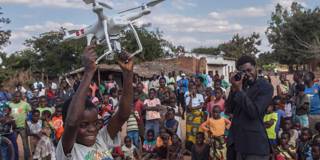
Harnessing Malawi’s Youth Bulge
Malawi's large and growing youth population does not lack talent or ambition. But how can an impoverished, landlocked democracy deliver the training, resources, and opportunities they need to apply those qualities?

Malawi's large and growing youth population does not lack talent or ambition. But how can an impoverished, landlocked democracy deliver the training, resources, and opportunities they need to apply those qualities?
LILONGWE – Malawi is facing a massive youth bulge, with more than half the population under the age of 18 – a share that is growing fast. This can be a boon for development, as a dynamic young working-age population propels the economy into the future. But, if the country fails to provide adequate educational and employment opportunities to its youth population, such a demographic structure can become highly destabilizing.